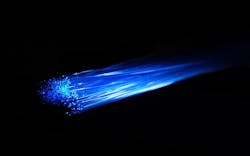Air Force surveys industry for next-generation speed-of-light sensors to characterize nuclear explosions
PATRICK SPACE FORCE BASE, Fla. – U.S. Air Force researchers are surveying industry to find companies able to develop new speed-of-light sensors able to collect, characterize, and transmit nuclear weapons detonation phenomena in gamma, electromagnetic pulse (EMP), RF, and optical teller light spectra.
Officials of the Air Force Technical Applications Center at Patrick Space Force Base, Fla., issued a request for information (FA702223RSOLS) last week for the Next Generation Speed of Light Sensors project.
Researchers want next-generation speed-of-light sensors to detect, identify, and characterize nuclear explosions and to report nuclear forensic information to national authorities.
The sensor design can be an original concept or the use and modification of ubiquitous commercial or government technologies for collecting the phenomena to produce a reaction time history (RTH) of nuclear reactions within the bomb that manifest as electromagnetic spectrum emissions over time.
Related: The technological challenges of complex missile defense
Researchers want to decrease the shape, size, dimensions, mass, and weight of the hardware, and decrease the language and media for software; enable an item to interface physically with another item; and increase the quality for which an item is designed to perform.
Concepts should reduce the use of materials and parts with low availability, limited vendors, and custom and proprietary parts or software.
Unmanned sensor requirements include high operational availability; significant remote maintenance and calibration capabilities; limited physical preventative maintenance; and ruggedization to withstand environmental conditions like exposure to high and low temperatures, solar radiation, rain, wind, snow, humidity, fungus, salt, and dust.
Related: Meeting SWaP needs for electronics and sensors for hypersonic flight
Solutions should be deployable on the ground, in the air, or in space, Respondents shall provide schedule outlines and cost estimates.
Companies should email six-page technology overviews of proposed next-generation speed-of-light sensor research no later than 9 June 2023 to the Air Force's James Pattullo at [email protected]. The format should be in .pdf or Microsoft Word.
Email questions or concerns to James Pattullo at [email protected]. More information is online at https://sam.gov/opp/7719c7facadc406bbcad5b7d26aa9ef9/view.
About the Author
John Keller
Editor-in-Chief
John Keller is the Editor-in-Chief, Military & Aerospace Electronics Magazine--provides extensive coverage and analysis of enabling electronics and optoelectronic technologies in military, space and commercial aviation applications. John has been a member of the Military & Aerospace Electronics staff since 1989 and chief editor since 1995.
